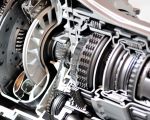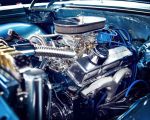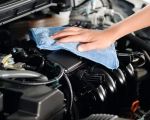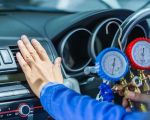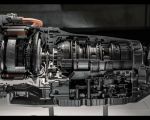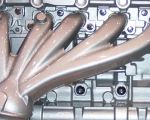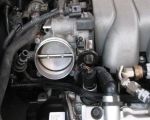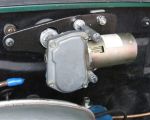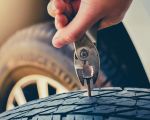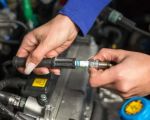How to Fix a Car That Pulls to One Side While Driving
It’s something every driver dreads—suddenly feeling your car pull to one side while you’re driving down the road. I remember the first time it happened to me. I was cruising down a straight road when I noticed my steering wheel wasn’t straight anymore. The car seemed to drift left, and I had to constantly correct it to stay in my lane. At first, I thought it was a fluke, maybe just the road conditions or a brief alignment issue. But as I drove on, it became clear that something was off with my car, and I knew I needed to figure out how to fix it.
Pulling to one side while driving is a common problem that many drivers experience, and it’s one that can be caused by a variety of issues. It can range from something as simple as under-inflated tires to more complex problems like misalignment or worn-out suspension components. Regardless of the cause, addressing the issue is crucial for your safety and the longevity of your car. In this article, I’ll walk you through the steps I took to diagnose and fix the issue of my car pulling to one side and how you can do the same.
1. Diagnosing the Problem: Understanding Why Your Car Pulls
The first step in fixing a car that pulls to one side is diagnosing the cause. I found that there are a few common reasons why a car might pull, and understanding them helped me narrow down the possibilities for my own vehicle.
One of the most common culprits for a car pulling to one side is tire-related issues. If your tires are unevenly inflated or if one tire is more worn than the others, it can create an imbalance that causes the vehicle to drift. Tire pressure is a simple and easy-to-check factor, so I started there. A quick inspection revealed that my front tires were significantly underinflated. I topped off the air in both tires, hoping that would resolve the issue.
However, after driving the car again, I realized that the problem persisted. This led me to suspect that there might be something wrong with the alignment. Misalignment occurs when the angles of your wheels are not set to the manufacturer’s specifications. When wheels are misaligned, it can cause the car to pull in one direction. Misalignment can happen from hitting potholes, curbs, or from general wear and tear over time. In my case, it seemed like a likely culprit.
Another possible reason a car might pull to one side is related to the suspension or steering system. Worn suspension components or uneven brake wear can also contribute to this issue. I knew that these were more complex issues to address, so I decided to check the basics first before considering a trip to the mechanic.
2. Checking Tire Pressure and Condition
Since tire pressure is such a straightforward and common cause of a car pulling to one side, I made sure to start with this. For my car, I used a simple tire pressure gauge to check all four tires, ensuring that each tire was inflated to the manufacturer’s recommended PSI. Sure enough, the front tires were both significantly underinflated. After filling them to the correct pressure, I took the car for a spin again, hoping for a quick fix.
As I drove, the car felt more stable, but there was still a slight pull to the left. This made me realize that tire pressure alone might not be the only issue. After checking the tread on my tires, I noticed that the left front tire had more wear on the inside than the others. This uneven tire wear can happen when the alignment is off, which was now making even more sense as the potential cause.
I learned that uneven tire wear isn’t just about aesthetics—it’s a sign of deeper mechanical issues that need attention. If you ever notice significant differences in tire tread, it’s important to investigate alignment and suspension issues right away to avoid further damage to the tires and vehicle.
3. Checking the Wheel Alignment
After addressing the tire pressure, I moved on to checking the alignment. While this is something that can be checked at home with a simple DIY method using a string or measuring tape, I decided to take the car to a local shop for a professional alignment check. I wanted to make sure it was done accurately and correctly.
The alignment technician confirmed that my car’s front wheels were indeed misaligned, causing the car to pull to the left. The misalignment was likely due to the rough road conditions I had driven on recently, including a few potholes that I had hit without thinking much of it. The technician realigned the wheels, and they also made minor adjustments to the caster, camber, and toe angles—critical adjustments to ensure the car drives straight.
After the alignment, I immediately noticed a significant difference. The car no longer pulled to one side, and I was able to drive straight with minimal effort. It felt as though the car was gliding down the road, which was a huge improvement. If you suspect that alignment is the cause of your car pulling, I highly recommend having it checked and adjusted by a professional mechanic or alignment specialist.
4. Inspecting the Suspension and Steering Systems
If your car still pulls after adjusting tire pressure and getting an alignment, it’s time to take a closer look at the suspension and steering systems. These components are essential for keeping the car stable and responsive. In my case, the problem had been resolved with the alignment, but if I had continued to experience issues, I would have had to inspect these systems more thoroughly.
The suspension system is responsible for absorbing shocks and keeping the wheels in contact with the road. Worn suspension components, such as shocks, struts, or bushings, can cause uneven weight distribution, leading to pulling or drifting. The steering system also plays a role in this, as any issues with power steering or the steering rack can affect how the car responds to driver input.
If you suspect issues with your suspension or steering, it’s important to consult a professional mechanic for a thorough inspection. They will check for signs of wear, fluid leaks, or damage that could be causing the pulling sensation. In my case, the issue was resolved before needing to look into the suspension, but these systems should not be overlooked if you continue to have alignment or pulling issues.
5. Checking the Brake System
Another potential cause of a car pulling to one side is uneven brake wear. If the brake pads or calipers on one side of the vehicle are worn down more than the other, it can cause uneven braking pressure and make the car pull. This was another factor I kept in mind during my troubleshooting process.
To check for this, I performed a quick test by gently applying the brakes while driving at low speed. If the car pulled when the brakes were applied, it could be an indication of uneven brake wear or a problem with the brake system. Fortunately, my brakes seemed fine, but for anyone experiencing pulling during braking, it’s important to have the brake system inspected by a professional.
In cases of uneven brake wear, a mechanic may recommend replacing the pads, rotors, or calipers, or adjusting the brake lines to restore balance and stop the car from pulling.
6. When to Seek Professional Help
While many causes of a car pulling to one side can be identified and resolved by the car owner, some issues require professional assistance. If you’ve checked your tire pressure, alignment, suspension, and brakes, and the problem persists, it’s time to take your car to a certified mechanic for a more thorough inspection.
A mechanic can perform a full diagnostic to rule out complex issues such as suspension damage, steering problems, or brake system issues. In some cases, problems with the car’s frame, wheel bearings, or other internal components can cause misalignment or pulling that might not be immediately obvious to the average car owner.
If your car continues to pull to one side after addressing basic issues, don’t hesitate to seek professional help. Addressing the issue sooner rather than later can save you from further damage to your car and ensure your safety on the road.
7. Final Thoughts on Fixing a Car That Pulls to One Side
Dealing with a car that pulls to one side while driving can be frustrating, but with a systematic approach to diagnosing and fixing the issue, it’s usually something that can be resolved. Whether the cause is underinflated tires, a misalignment, or something more serious, addressing the issue quickly is crucial for both your safety and the well-being of your vehicle. By following the steps I took—checking tire pressure, getting the alignment fixed, and ensuring the suspension and brake systems are in top condition—I was able to restore my car’s performance and enjoy a smoother, more controlled driving experience.
If you find yourself in a similar situation, I encourage you to take the same methodical approach and seek professional help if needed. For any car-related issues that might require a tow or emergency roadside assistance, be sure to visit Rescue & Towing for reliable and fast service.













